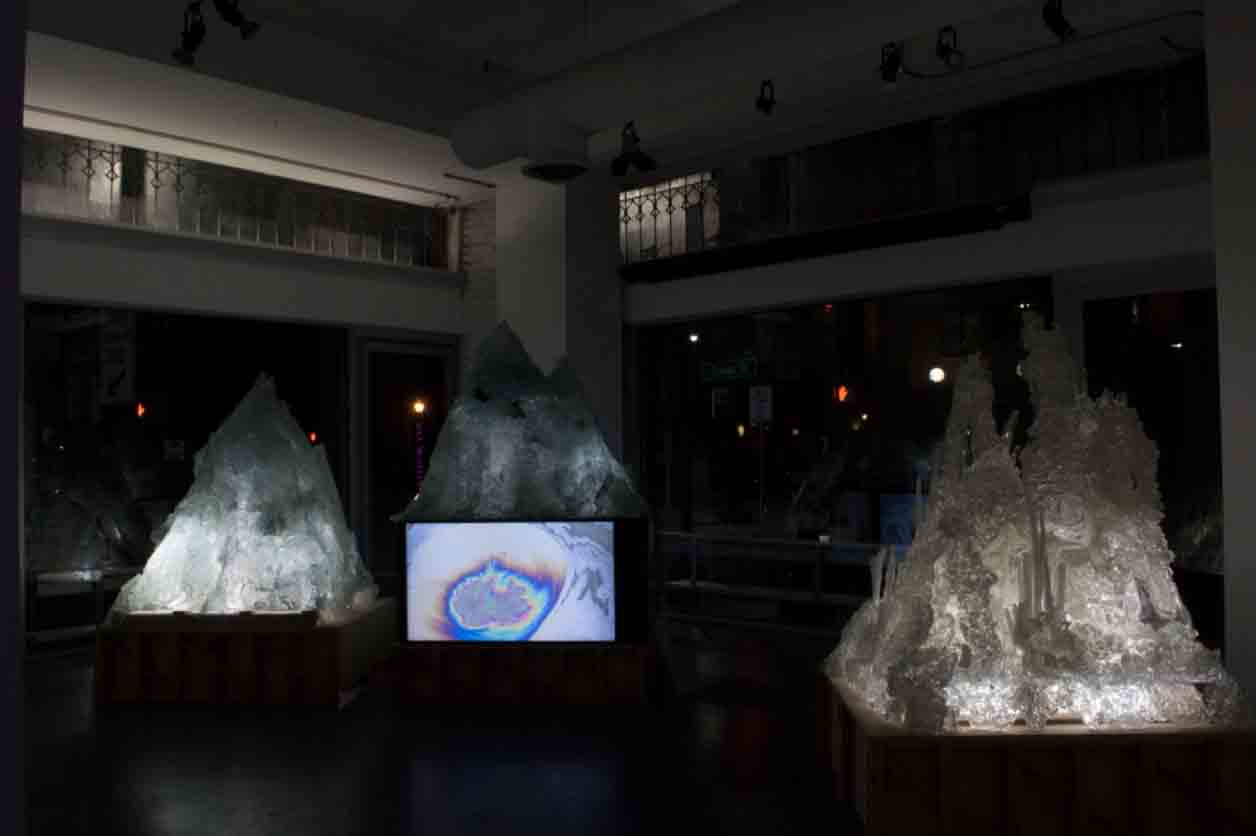
This is Quinnipiac land. The Quinnipiac tribe, that is.
Look beyond the fog of your condensed breath — at the lace-like, Connecticut tree branches, at the rambling Gothic architecture that begins just past the New Haven Green. Before the stone paths, the car exhaust and the statues of American founders, New Haven belonged to another people.
In Artspace New Haven’s group exhibit, “Between Beauty and Decay,” artists from American, American Indian and Middle Eastern backgrounds reveal the tensions between the modern, visible world, nature and the historical conflicts that haunt our society. The eight artists use a multimedia approach to demonstrate the ongoing war between contemporary landscape “beauty” and the necessary “decay” to achieve this beauty. Through an eerie mixture of videos, ice-like sculptures, encased indigenous cultural property and more, the artists effectively highlight how our current landscape arose from the deterioration of history, culture and nature itself.
Those breathtaking skyscrapers and quaint coffee shops didn’t rise out of nothing. To achieve industrial beauty, humans needed to take the Earth’s resources through fossil fuels and uranium mines. American artist Andrew Erdos demonstrates this exploitation with three shattered glass mountains, television monitors and a video projection. He captures the costs of human innovation by demonstrating the fragility of nature’s reserves. The broken glass and the approaching storm clouds displayed on the television monitors create a sense of foreboding. The combination of a broken mountain and modern technology tells us that the exploitation of nature cannot last forever.
However, the exhibit examines the holes left in human history. We journey through scenes of the Gaza Strip, modern Athens, Malta’s ruins and many other places of previous conflict in Basma Alsharif’s “Deep Sleep” — a 12-minute-and-43-second film on continual loop. The oscillation between geographic sites challenges viewers to ask whether these ruins are truly beautiful and to face the tensions that led to these visible states. When these sites are presented together, they introduce the underlying generational stress that imbues itself in those who were affected.
Then, we confront the loss of indigenous peoples through mirrored boxes. Walk behind the dividing wall and viewers come face to face with themselves. These boxes reveal nothing but the viewers’ faces even upon closer inspection. These boxes, however, contain cultural objects, including a basket, a rattle, a ceremonial feast dish and even a watchman totem pole, which is encased in a 10-foot-tall box. It is a powerful piece, since the mirrored glass is a one-way mirror, allowing the inside object to “see” its surroundings, while its viewers cannot. The artist Nicholas Galanin explores the cultural extraction and commoditization of Indigenous cultures, since Indigenous art is often extracted from Indigenous communities and viewed as a “historical object” in museums. In Galanin’s work, the object, which may “see” everything, now holds the power, instead of the viewer — who can see nothing.
We should not forget, which is why this exhibit and others like it are important. The artists’ collaboration reminds us of the irretrievable costs necessary for the landscape that surrounds us. It rejects cultural amnesia and tells us to remember what once existed here. We cannot shelve nature, wars and the colonized into objects of the past. “Between Beauty and Decay” tells us that despite the forced Americanization and Christianization of Indigenous people, they and we must preserve their identities and beliefs. It tells us that we cannot disregard the mountains that crumble for our buildings to rise. It tells us that we may see beauty in ruin, but we must recognize that the ruining is ugly.
Allison Chen | allison.chen@yale.edu .







